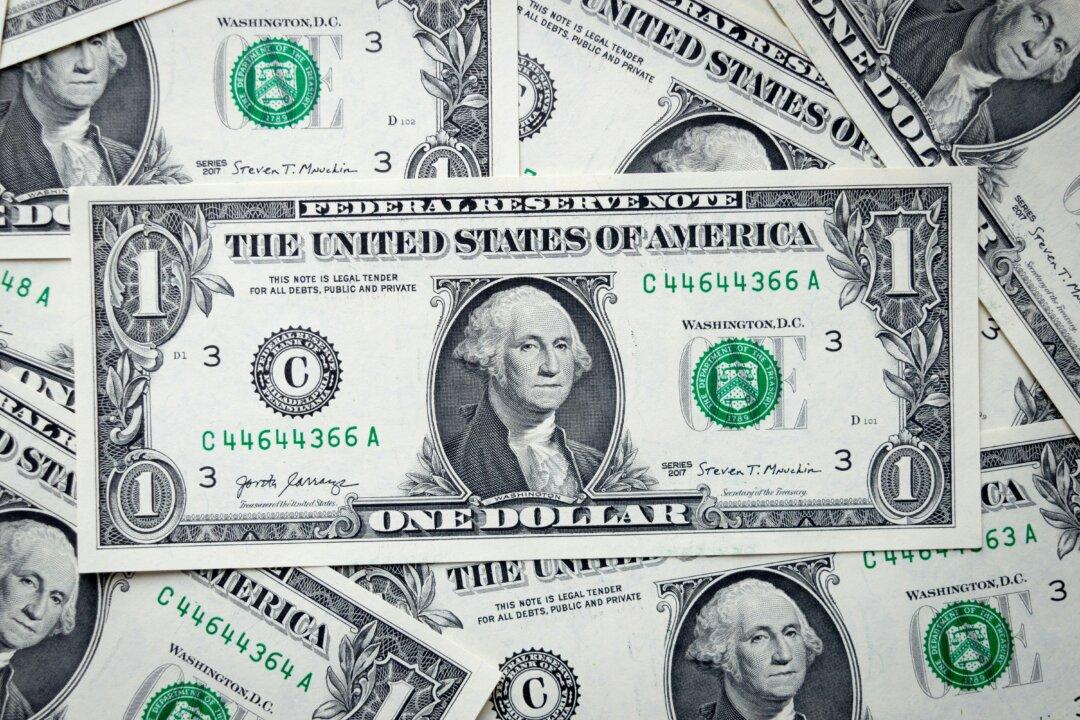Although China’s monetary authorities are trying hard, and are somewhat succeeding in stemming the yuan’s slide, all Beijing can do is to check the pace of the fall, say analysts; yet the currency must be allowed to slide for a while, they add.
At the end of trade on Wednesday, the Chinese yuan had dropped 5.6 percent year to date versus the dollar, to 7.29 per dollar, making it one of the worst-performing Asian currencies and coming within striking distance of its all-time low last year of 7.30.
In contrast, while the Singapore dollar (+3.5 percent year to date), Thai baht (+2.8 percent), Indian rupee (+1.9 percent), and the Indonesian rupiah (+0.9 percent) appreciated during the period; the depreciation of Malaysian ringgit (at 4.8 percent) and Philippine’s peso (4.6 percent) were slightly more modest.
Consequently, state-owned banks in China were seen actively mopping up offshore yuan, effectively raising the cost of shorting the Chinese currency, while the People’s Bank of China (PBC) issued verbal warnings urging restraint in dollar sales and then fixed the daily buying and selling rate.
However, analysts say these efforts have only slowed the pace of the fall.
“The PBC is doing a pretty good job, now, of controlling the pace of decline, but I expect that over the next few weeks the yuan will continue to slide gradually,” Robert Carnell, the Singapore-based head of research and chief economist Asia-Pacific, ING Bank, told The Epoch Times.
To some extent, says Mr. Carnell, Beijing has allowed yuan to slide, and the PBC must realize that it is part of the solution because Beijing does not have very many other policy tools.
Given the context of slowing GDP and low inflation, the PBC cannot use fiscal policy because of excessive debt in the economy. “Monetary policy cannot be applied aggressively now either, because the PBC is concerned about what further rate cuts would do in terms of encouraging more leverage that could also have a spill-over effect by weakening the yuan even more,” he adds.
Hence, a weaker currency appears to be part of the answer.
The yuan has been under increased pressure following weaker-than-expected activity data and prolonged weakness in the property sector, prompting the authorities to soften even further with a policy rate decrease last week.
“The PBC’s policy interest rates cut on August 15th also added to depreciation pressures on the currency,” said investment banker Goldman Sachs in a note the following day.
The yuan’s fall has also caused capital outflows from China, as foreign investors seek higher returns elsewhere after losing faith in the Chinese economy.
Data compiled by the Washington, D.C.-based Institute of International Finance (IIF), for instance, revealed that approximately $3.7 billion was withdrawn from Chinese stocks in the first two weeks of August, marking the second-largest outflow of capital from the country since the COVID-19 outbreak.
The net withdrawal was $7.9 billion in October 2022, when China’s economy was mired in recession due to China’s zero-COVID policy, according to a Nikkei report.
Foreign ownership of Chinese bonds also declined, from 2.65 percent in December 2022 to 2.41 percent in July 2023, resulting in capital outflows of $7,1 billion, according to Natixis Research.
“The main change in China’s capital flows since 2022 is that the currency is now only supported by the current account (surplus of exports over imports) while the net capital inflows from foreign investors have reverted into outflows since the second quarter 2022,” said Natixis Research.
But even as Beijing frets, and moves cautiously in managing its currency, Wall Street is more concerned.
“There are a lot of Chinese companies listed on Wall Street, and if the currency weakens, their dollar value goes down,” said Mr. Carnell.
“But for U.S. companies with major earnings and investments from China, the falling yuan signals a weakening macro story that would lead to softer earnings from China and weaker growth prospects there,” he added.
The yuan’s depreciation could also trigger a currency war, as other countries may devalue their currencies to maintain their competitiveness and protect their exports. This could lead to a race to the bottom and destabilize the international monetary system.
Besides, yuan’s depreciation could exacerbate the trade tensions between China and the United States, as a weaker yuan makes Chinese exports cheaper and more attractive in the global market. This could increase the trade deficit of the United States and prompt more tariffs and sanctions from the U.S. administration.
The yuan’s depreciation also could hurt the profits of U.S. companies that have operations or sales in China, as they would receive less dollars when they convert their yuan earnings. This could lower their earnings per share and stock prices.
Even further, yuan depreciation may also raise the debt burden of Chinese enterprises that have borrowed in foreign currencies since they will have to pay more yuan to service their loan. This could heighten the danger of default and contagion in the Chinese financial system.
Still, promoting growth remains a priority, and analysts at Natixis expect that the PBC will take additional measures to slow the depreciation trend in the coming weeks, such as including more significant countercyclical factors in the daily yuan fixing, lowering the foreign exchange deposit reserve ratio requirement, and increasing the foreign exchange forward sales reserve requirements.
“All in all, China’s net capital flows and foreign exchange settlements point to a weaker yuan,” Natixis’s note said, adding that unless the sentiment about China’s assets improves, it is hard to see how Beijing will manage to avoid the selling pressure the yuan is now facing.
“The PBC is currently managing to keep the yuan at or below 7.30. But eventually, Beijing will have to let go and allow the currency to fall further,” Mr. Carnell added.





